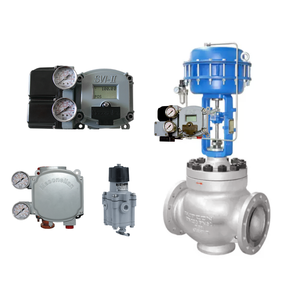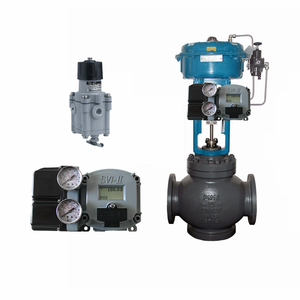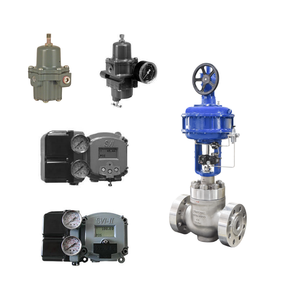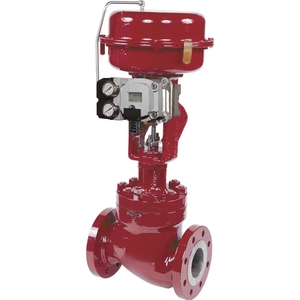
All categories
Featured selections
Trade Assurance
Buyer Central
Help Center
Get the app
Become a supplier

(43 products available)












































If people include an important industrial valve for regulating and isolating high-pressure fluid service, consider a globe valve of class 2500. The valuation is highly rated for its capacity to restrict flow and withstand high pressures, which makes it adaptable to several industrial uses. Below are some common types of Globe valve class 2500.
This is the classical variant that features a spherical use form facilitating easy flow control. This is ideal for applications with high pressure and temperature, as it can withstand extreme conditions.
The braised type is specifically designed for metal piping connections utilizing brazing as a jointing method. This is common in installations where welding is inadvisable due to the fragile nature of the surrounding materials.
This variant has a slope seat that helps minimize flow resistance compared to the regular globe valve. Thus, this is more efficient regarding medium control in high-pressure environments.
A bellows globe valve is of great use in applications where leakage poses a great threat. The bellows help make an airtight seal, thus preventing hazardous fluid leaks. This aids in chemical or steam line control.
The metal-seated globe valve is resilient and has high wear and tear resistance. This makes it open and close very effectively throughout its life. This makes it viable in high-stakes, high-temperature scenarios where soft-seated valves would probably fail.
This valve features electric actuation, offering precision in fluid regulation. It applies to automating processes where manual operation is not tenable due to inaccessibility or labor costs.
Industrial harnessing of durability merits premium payoff materials in high-pressure service, such as globe valves in class 2500. Below is a list of materials, as well as the durability-enhancing aspects of this valve.
Most valves like ASTM A 276 F 316/316L/A 724 Grade B and CF8/8M stainless steel are made of stainless steel and add great valued resistance against rust, corrosion, and extreme pressure. These make Stainless steel globe valves ideal for oil and gas, maritime, and power generation industries.
Consider a brass globe valve for a budget option that balances corrosion resistance and strength. The material is ideal for water and steam applications because of its resistance to oxidative agents and robustness under thermal impacts.
High-strength carbon steel valves often handle very high-pressure applications in heavy industries like mining and construction. Apart from their price, their resistance to wear and tear is a major justification for their use in such demanding conditions.
Unlike brass, bronze can withstand salt corrosion very effectively. This makes it favorable in maritime and other sea proximity-related applications. It also features very good heat dispersal, very competently managing temperature variations in fluid systems.
For applications involving extreme temperatures and aggressive chemicals, the class 2500 globe valves use Inconel or Monel. These alloys ensure high wear resistance, which translates to failure longevity in adverse conditions.
The precise engineering standards as per globe valve class 2500 guidelines ensure that these valves maintain structural integrity, preventing material fatigue over time. This is essential in very high-pressure situations, as durability loss leads to abrupt system failures and possibly hazardous repercussions.
The class 2500 globe valves are hard to ignore, particularly when it comes to regulating and controlling fluid in industrial applications that require high pressure. They are widely applied across various sectors due to their ability to withstand extreme conditions and enable precise flow control. Below are some commercial value applications of these valves.
Due to the demanding operational requirements in this space, class 2500 globe valves are essential. They are used in drilling operations, pipeline transport, and refinery work to control fluid movement under high-pressure conditions. Their durability equates to reduced maintenance costs and increased operational safety, key concerns in this volatile industry.
These valves are especially applicable in managing steam and water flow in a power plant's boiler system, whether nuclear or thermal. Their ability to endure great temperatures and pressures directly contributes to efficiency and safety in power generation. The combustion and steam cycle management create a demand for reliable and efficient valves, closing the utility between these two.
High corrosive materials mean that chemical processing requires great attention to detail concerning equipment durability. The class 2500 globe valves provide both chemical resistance and a snug fit to prevent leakage, ensuring secure control of hazardous materials. Reduced maintenance downtime and extended service life impact on the bottom line as these come into play in this sector.
These valves regulate the flow of water and wastewater through treatment systems. In many municipal and industrial systems, the need to replace these valves frequently is eliminated by their robustness, which aids in the long-term sustainability of the systems.
Valves of this class are commonly used in ships and offshore rigs due to their saltwater corrosion resistance and overall durability. They help fluids in piping systems and under high pressure, ensuring the safety of maritime operations.
Class 2500 globe valves are applied in most high-pressure service industries, such as oil and gas or power generation. To select these valves in wholesale quantities, several factors and questions arise. Below are some ways to choose globe valve class 2500 in bulk.
Material impacts overall performance and durability. For example, stainless steel is ideal for corrosive environments like chemical processing. In contrast, brass and bronze work well in maritime and steam systems. Steel valves lend themselves to high-pressure, high-temperature scenarios due to their strength and resilience.
Consider the required end connection types in order to ensure the valves integrate properly into existing piping systems. These may include threaded, buttweld, or brazed ends. Correct alignment guarantees no impending leaks and easy installation.
Verify that the selected valve can withstand the specific pressure and temperature ranges of the application. This ensures long-term reliability and performance. Choosing valves rated for these extremes mitigates the risk of valve failure, causing system downtime and danger.
If automation is needed, the valve should be fitted with the appropriate actuator, either manual, electric, or pneumatic. Automated valves increase operational efficiency, especially in hard-to-reach areas or where conditions are hazardous for manual operation.
Ensure that the valves meet industry-specific standards, such as ANSI or API. These guidelines guarantee that the valves perform as intended and are fit for service. Compliance with industry standards also means quality and reliability.
Identify the specific needs for application. For instance, a class 1500 globe valve suits high-pressure jobs in oil and gas and power generation. In contrast, class 600 and 2500 work in less extreme environments. This step eliminates over-specifying or under-specifying a valve for the intended purpose.
A1: These are widely employed in the oil and gas, power generation, marine, chemical processing, and water treatment industries, which generally require regulating fluids under high pressure.
A2: Yes, they feature different end connections like threads, buttweld, or brazed, which allow the globe valves to install easily into existing piping systems.
A3: Their durability and resistance to rust minimize maintenance, as these valves are built to last, providing a longer-than-usual service for critical applications.
A4: They are made of stainless steel, carbon steel, brass, bronze, and high-alloy materials. Each of these is selected according to the specific application and environmental demands.
A5: Yes, they are designed to withstand both high and low temperatures, making them appropriate for power generation, chemical processing, and steam services.